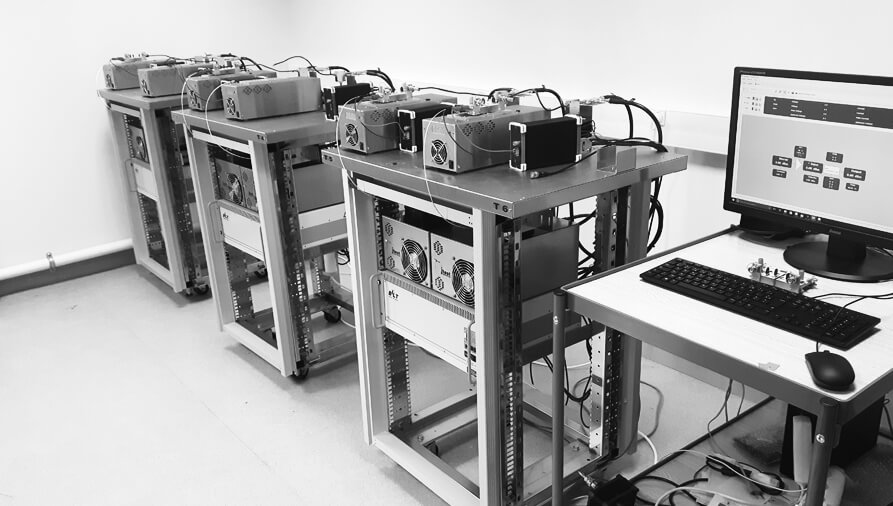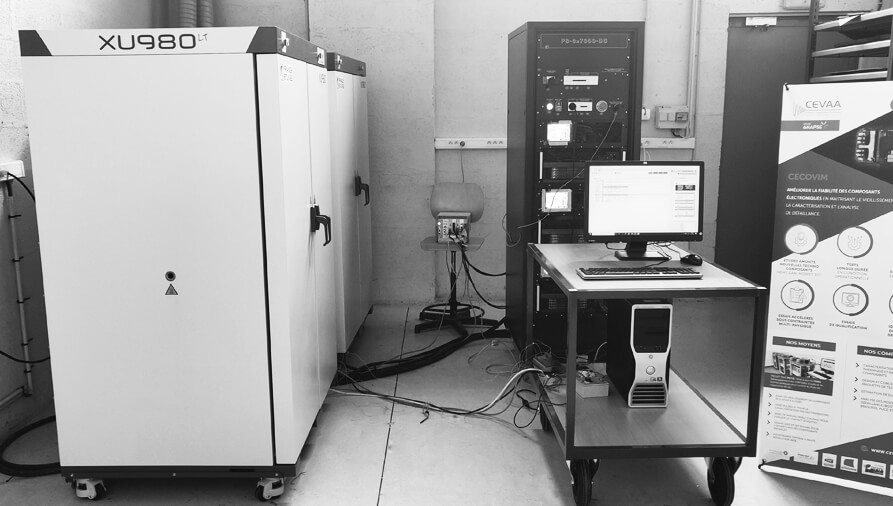Burn-In bench and Life-test up to 6 independent channels

Electronic reliability is critical to competitiveness. It is necessary that the products are adapted according to the variable conditions of use. The 6NAPSE Group supports manufacturers in better controlling the failure of electronic systems.
Experiment and solve the problems of reliability of power transistors.
Electronic reliability
Failure control begins with knowledge of the failure modes. New component technologies (HEMT AlGaN/GaN, MOSFET Sic, etc.) offer very high performance, but their modes of degradation over time depending on the stresses are not known due to a lack of feedback.
In this context, the 6NAPSE Group offers aging studies to reveal the different degradation mechanisms relating to the technology used. These degradation mechanisms can be activated by temperature, electric current, electric field, etc.
The 6NAPSE Group has made available the Burn In and Life test bench with 6 independent channels allowing better separation of component degradation phenomena.
The components currently studied are RF (Radio Frequency) transistors, GaN technology, intended to operate in radars. They are placed in their amplifiers. The amplifiers have been designed to operate in the S band (radar frequency). They allow in-situ measurements facilitating the characterization of the component.
Applications
The aging test plans are defined according to the degradation effects that one wishes to observe. Examples of tests that can be performed electrically are:
- DC-HTOL (Direct Current – High Temperature Operating Life) allow the monitoring of the static parameters of the transistor such as: drain current ID, transconductance gm, pinch voltage VP, etc.
- HTRB (High Temperature Reverse Bias) used to heavily reverse gate voltage bias. This type of test makes it possible to highlight any piezoelectric effects.
- Step-Stress in temperature, compression or tension which trigger degradation in a few days. This type of stress makes it possible to discern the maximum voltages / current generating strong changes in electrical parameters (Safe Operating Area or SOA).
- Pulsed-RF-HTOL (Radio Frequency – High Temperature Operating Life) which is the aging in radar operation…
Bench characteristics
The bank is made up of cards integrated into BILT frames. Each channel is made up of 3 subsets:
- Drain / source bias: the transistor under test is biased with a constant drain voltage (0V-60V, 20A) and a pulsed gate voltage (-25V/+25V).
- The RF wave is generated by a VCO source amplified by a VGA. A switch on the line generates the RF pulses. The measurements are made from diode detectors coupled to ADCs which sample the measurement in the pulse. An amplifier (50W, 800MHz-6GHz) is positioned on each channel to amplify the input power seen by the component.
- A heater is used to set the soleplate temperature (30°C-200°C) of each amplifier.
The Bilt system, , integrating the DC / RF cards, manages the entire test autonomously. The test timing diagram, voltage, current, RF power and heater temperature measurements are made and stored for the duration of the test in the Bilt system. The modularity of the Bilt system makes it possible to adapt the equipment according to the need and to the technological evolutions of the components to be tested.
The aging bench is sized for the new RF transistor technologies used in the fields of radio frequency.
Other areas are targeted due to the modularity of the bench:
- Telecom;
- Power/switching;
- Optoelectronics…

NEW !
As part of the diversification of test benches intended for the reliability of electrical systems, a dedicated bench for the aging of new battery / supercapacitor technologies has been developed.
Contact us to discuss your needs quickly and technically!
